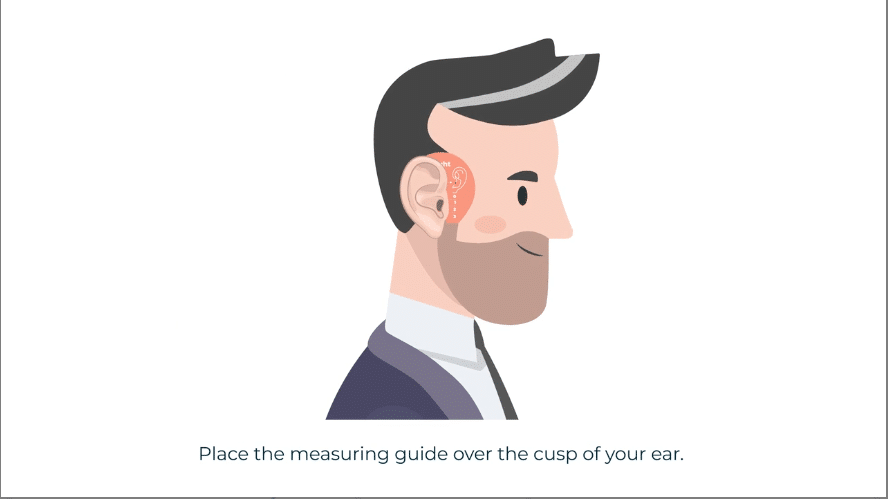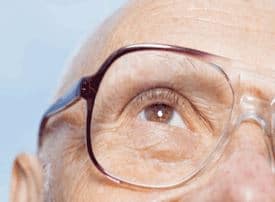Hearing Healthcare Market Development Column
In July, Lexie Hearing launched a direct-to-consumer (D2C) hearing aid with a model of care that includes a digitized onboarding process, in-situ hearing test, and rewards program. These three innovations anticipate over-the-counter (OTC) deregulation, while also embodying healthcare best practices in patient adherence.
Lexie Hearing’s current product line consists of one model, the Lexie Lumen, with directional microphones and a telecoil. The product is a customized adaptation of the IntriCon Lumen 155i. The price point of $799 a pair registers at about half of Costco’s Kirkland Signature 9.0 hearing aids, which Auditory Insight views as an important consumer benchmark, given the price’s visibility and consumer trust in the Costco brand.
The company behind Lexie is hearX Group. Based in Pretoria, South Africa and formed in 2015, the company received a Series A $6M investment from Bose Ventures. HearX Group’s core competency is innovative hearing testing technology. The World Health Organization tapped hearX to develop its mobile hearWHO app, 23andMe incorporated the company’s hearing test into their platform, and D2C companies such as Eargo have licensed the hearDigits test to serve as the screening engine for their online hearing tests.
With Lexie Hearing, hearX Group appears to have embraced a strategy of forward integration. The company’s hearing testing technology plays an important role in Lexie Hearing’s model of care.
Digitized Onboarding with Video Animations
In contrast to brick and mortar clinics, as well as some D2C companies that emulate the clinic process online, Lexie’s onboarding process is completely digitized, performed in the Lexie app. “There’s no intervention by the hearing expert at this point,” emphasized Nic Klopper, chief executive officer of hearX Group in a video interview. “We’ve done numerous studies to show that this is a fairly automated process and doesn’t require much hand holding.”
To onboard, patients watch a series of animated videos with captions, a welcome approach for people with hearing loss who may struggle to hear traditional videos with delayed or incomplete captioning. The videos demonstrate tasks traditionally delegated to patients, such as inserting a battery, but also tasks traditionally reserved for the hearing care professional (HCP), such selecting the correct domes and tubes.
In Figure 1 below, for example, the animation shows how to position a measuring guide in order to select the correct tube size.

Figure 1: Animation shows user how to position a measuring guide in order to select the correct tube size
For the majority of Lexie patients, onboarding takes about 30 minutes. At any time during the onboarding process, patients may contact a hearing expert for help. Klopper reported in a follow-up email, however, that “those that have struggled have totaled <1% of all the onboarding sessions.”
In-Situ Audiometry to Obtain Thresholds
Once patients have inserted the Lexie hearing aids, the smartphone app performs a pure-tone hearing test directly through the aids. “Because the hearing aid is calibrated,” noted De Wet Swanepoel, audiological advisor to Lexie Hearing (and a Board Director of hearX Group), “we can provide a hearing test that is within test-retest variability of an audiogram you would get at an audiologist.”
In a follow-up email, Swanepoel provided a forthcoming white paper which reported that “78.4% of the thresholds obtained with the Lexie Lumen hearing aid and the reference standard audiometer were within +/- 5 dB of each other,” while 93.2% of the thresholds were within +/- 10 dB. The paper noted, however, that the sample size was only 10 participants.
The Lexie model of care includes outreach to patients. Hearing experts check-in with patients at days three, seven, 11, and 32 post-delivery of the hearing aids. The outreach pinpoints patients who may be experiencing difficulty.
By combining a digitized onboarding process with in-situ audiometry, Lexie Hearing essentially empowers patients to self-fit an FDA-approved, dependable hearing aid. The FDA has yet to publish its initial guidelines for comment on a new class of OTC hearing aids. However, by offering a self-fitted hearing aid, the Lexie Lumen’s model of care seems to anticipate the intent of the 2017 OTC Hearing Aid Act to empower patients to fit aids themselves.
Rewards to Facilitate Acclimatization
Lexie Hearing has also implemented a unique rewards program to encourage patients to wear their hearing aids during the first 45 days. “The battle is only 50% won to get the device into someone’s ear and getting them to have a good fit,” Klopper said. The company believes that patients still need a considerable amount of guidance and education after fitting.
The Lexie app slots patients into one of three rewards programs based on their stated lifestyle and hearing goals. The program rewards points to patients’ for accomplishing weekly wearing goals as well as activity goals. The wearing goals are dynamic, modulated based on the actual time patients spent wearing their hearing aids the previous week. In the broader healthcare arena, providing incentives to patients for adherence to treatment is a patient engagement best practice. Employers and payers, for example, often offer rewards to encourage people to adopt healthy lifestyles.
As for the Lexie activity goals, they educate patients on critical functions such as adjusting the hearing aid setting for the correct environment. The activity goals also assess patient satisfaction. “Once the satisfaction drops below a certain point,” Klopper said, “our hearing expert or product support specialist then engages and reach out.”
Assessing patient satisfaction is another patient engagement best practice. For example, in the value-based care programs that Centers for Medicare & Medicaid Services (CMS) administer for payers and physicians, member and patient satisfaction comprise a significant component of how CMS assesses quality of care.
Lexie Hearing has joined a league of other pioneering D2C companies such as Eargo, Listen Lively, and MDHearing Aid. Lexie Hearing’s experience in the market will create additional dialogue on how best to configure the model of care to serve patients with hearing loss.
**Disclosure: The author discloses that her company consults with hearing device manufacturers and pharmaceutical hearing healthcare companies.
 Nancy M. Williams is President of Auditory Insight, a boutique consultancy advising leaders on transforming hearing healthcare. Nancy partners with senior leaders of pharma and device companies to develop successful commercialization strategies based on deep insight into patient needs, practical understanding of clinical behaviors of audiologists and ENTs, and unique viewpoints on how hearing healthcare is evolving. She holds an MBA from Harvard Business School and a B.A. from Stanford University in Quantitative Economics, both with distinction.
Nancy M. Williams is President of Auditory Insight, a boutique consultancy advising leaders on transforming hearing healthcare. Nancy partners with senior leaders of pharma and device companies to develop successful commercialization strategies based on deep insight into patient needs, practical understanding of clinical behaviors of audiologists and ENTs, and unique viewpoints on how hearing healthcare is evolving. She holds an MBA from Harvard Business School and a B.A. from Stanford University in Quantitative Economics, both with distinction.








Super interesting Nancy. Thanks for this.